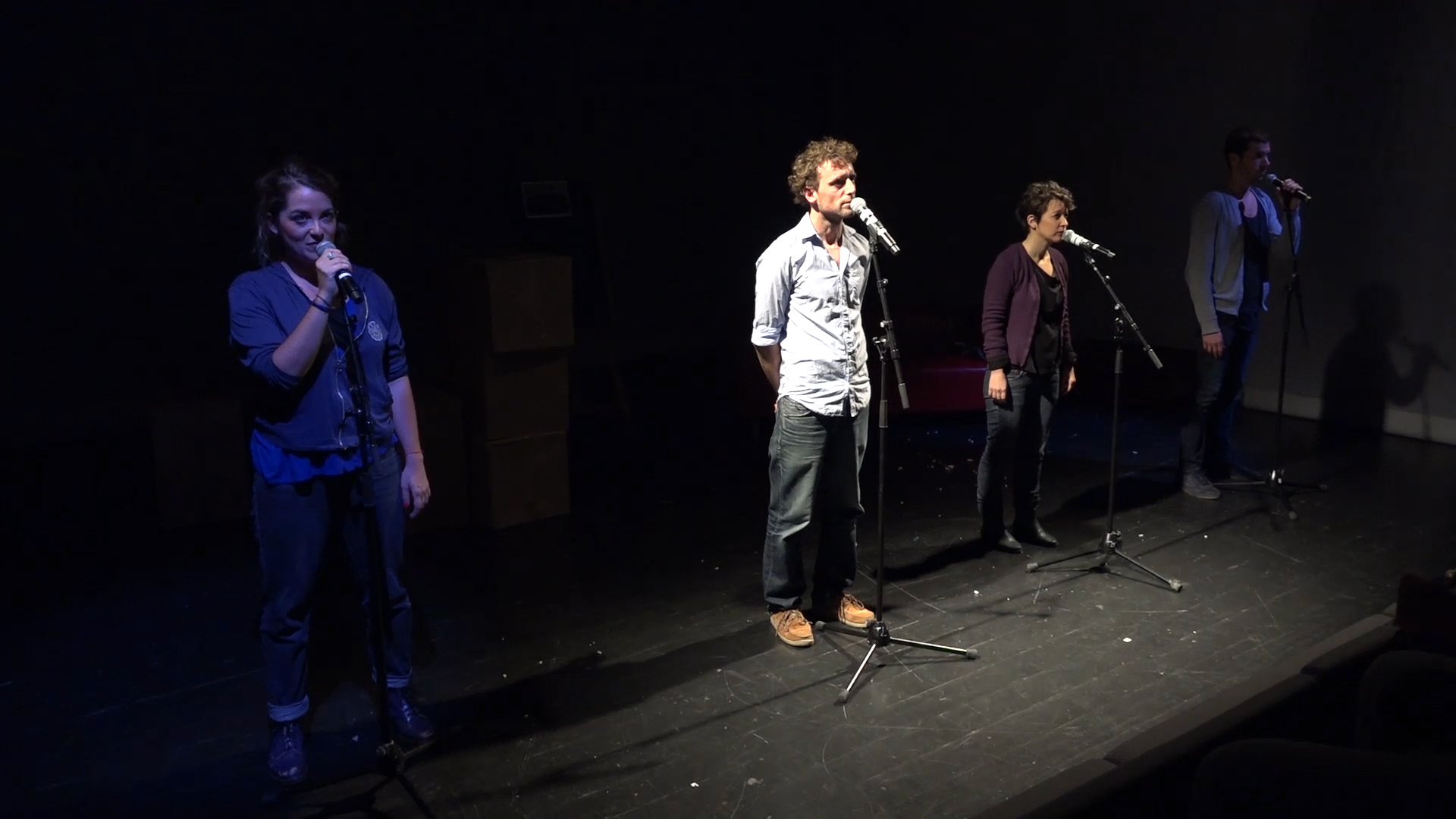ENASCOR: a company-in-residence at ENS Paris-Saclay

The artists will collaborate with our students, researchers and staff throughout the year and until the move to the Moulon district.
ENS Paris-Saclay offers future professors and researchers a well-rounded education, balancing its focus on research-led teaching with strong links to arts and culture. La scène de recherche reflects this approach and has already become a valuable lever for creative projects.
A call for proposals was made several months ago for artists to undertake a residency at ENS Paris-Saclay. The ENASCOR company was chosen for the ambitious project and has already arrived on the Cachan campus to work with the ENS community.
An artists’ residency at ENS Paris-Saclay
ENASCOR was founded in 2005 on the initiative of director Julien Avril and his classmates from drama school. They started out with children’s shows before turning to documentary theatre, driven by “a desire to combine current issues and the poetic space of the stage through new forms of performance”.
Their last show, which was awarded the Dramaturgies Plurielles Project Creation Grant from the Centre National du Théâtre based on the quality of the text, deals with the paradoxes of nuclear energy—an interest in science that Mr. Avril explained to us in these terms:
“When I write a play, I always try to represent a fragment of the world in such a way as to trigger a shock—an aesthetic, emotional or intellectual shock that modifies spectators’ certainties and perception of the world, and invites them to action. But to provoke this shock, I must first have felt it myself by observing the real world. So being close to researchers who spend their time interpreting this reality, and to the professors who try to make it understandable and their students who are experiencing this understanding, all that offers me an inexhaustible source of inspiration.”
The director believes that artists and scientists share the same positioning vis-à-vis the world, yet they differ in their method. “[This] sometimes makes their relationship complicated, especially when they are asked to work together at the risk of diluting each other’s approach,” he said. “So I think we just have to place them next to each other; give them the opportunity to share a space and discuss their visions of things when they need to.”
Outline of the programme
For ENASCOR, the variety of ENS Paris-Saclay’s disciplines and its diverse community make it an auspicious ground to experiment on.
The collaboration will take several forms:
- At first, the members of the company will mingle with students during classes, with researchers in their labs, and with staff in their workspaces.
- Later on, workshops focused on various artistic practices (writing, theatre, dance, circus, music, etc.) will be organized.
These exchanges, meetings and discussions will serve as material for the artists, which they will address poetically in various different forms and spaces. The company will also get involved in the many events held in and around the School throughout the year; in research, teaching and outreach projects; and in student associations.
This collaboration between the arts and science worlds will culminate in a major artistic event to herald the move to the Saclay plateau.
